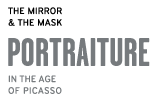
Gesture and Expression
While it has always been known that a gesture, pose or specific movement has the potential to convey a psychological message or individual emotion, the new need to depict the sitters’ inner character brought about a radical change in modes of visual expression. In early 20th century Vienna the introspective portraits of Oskar Kokoschka and Egon Schiele used distorted forms and exaggerated gestures that became key elements to reveal the sitter’s inner turmoil through heightened Expressionist emotion.
While it has always been known that a gesture, pose or specific movement has the potential to convey a psychological message or individual emotion, the new need to depict the sitters’ inner character brought about a radical change in modes of visual expression. In early 20th century Vienna the introspective portraits of Oskar Kokoschka and Egon Schiele used distorted forms and exaggerated gestures that became key elements to reveal the sitter’s inner turmoil through heightened Expressionist emotion.

Egon Schiele
Self-Portrait with Lowered Head, 1912
Oil on board, 16 5/8 x 13 1/4 in. (42.2 x 33.7 cm)
Leopold Museum, Vienna

Egon Schiele
Self-Portrait with Chinese Lantern Plant, 1912
Oil and gouache on board, 12 3/4 x 15 7/8 in. (32.4 x 40.2 cm)
Leopold Museum, Vienna

Oskar Kokoschka
Knight Errant, 1915
Oil on canvas, 35 1/4 x 70 7/8 in. (89.5 x 180 cm)
Solomon R. Guggenheim Museum, New York

















